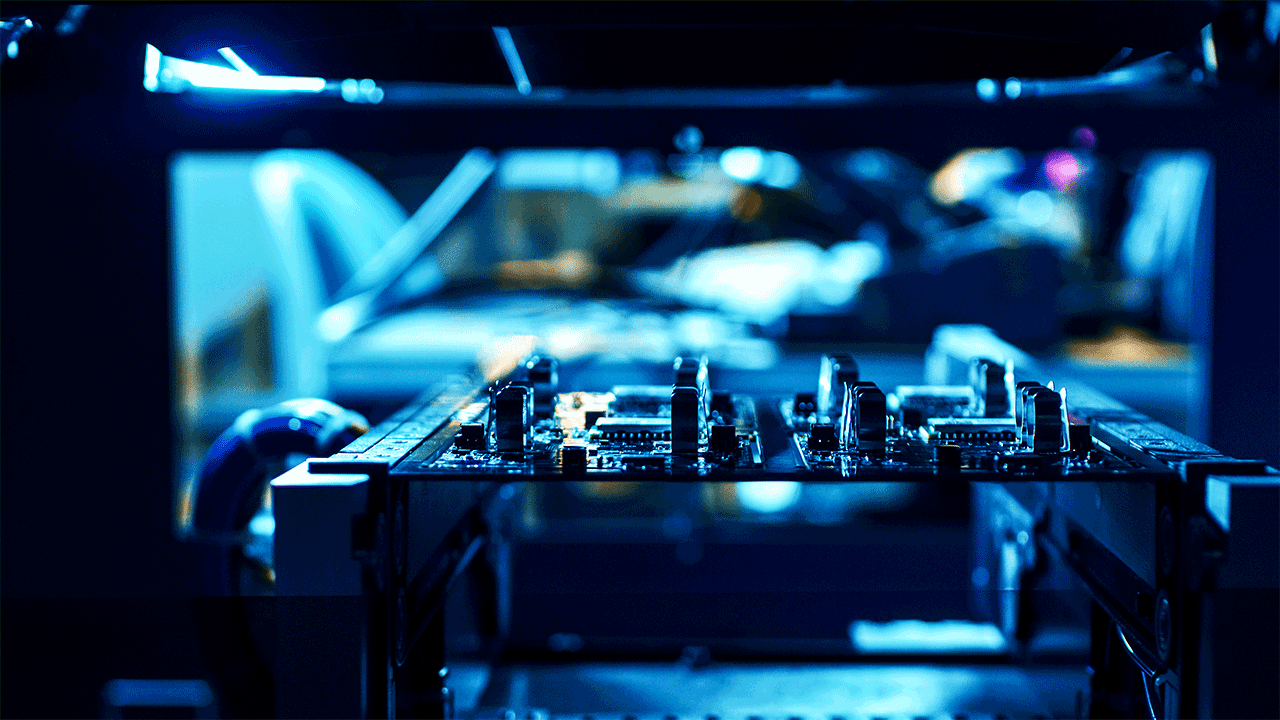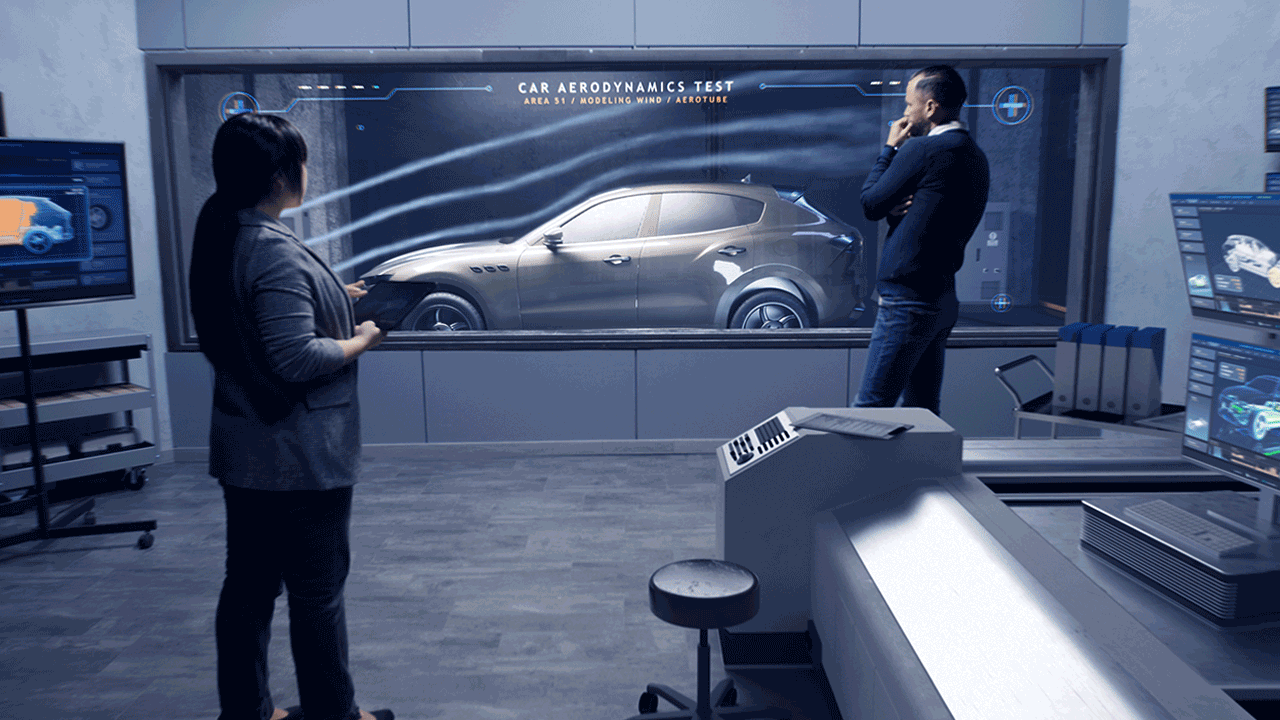How Do I Know if My Automated Test Equipment (ATE) Can Be Used for Functional Safety Testing?
Intro
Unlock Engineering Insights: Explore Our Technical Articles Now!
Discover a Wealth of Knowledge – Browse Our eBooks, Whitepapers, and More!
Stay Informed and Inspired – View Our Webinars and Videos Today!
Exploring the future of software-defined vehicles through expert insights.

The automotive industry continues to evolve exponentially, but what does not change is that those developing new automotive products need to prioritize safety and reliability. The many processes within testing these products will remain essential to ensure that this era of vehicles mitigates drivers’ exposure to danger and system failures. As vehicles’ electrical and electronic systems become more complex, they will require continuous verification and validation (V&V)—which incorporates testing. V&V testing at the appropriate times and levels allows engineers to evaluate whether or not the component, subsystems, systems, and vehicles meet the function, performance, and safety requirements. There is specific automated test equipment utilized to perform this testing.
Automated Test Equipment (ATE), also referred to as automatic test equipment, is computerized machinery that can test the functional, performance, qualification, and safety requirements of electronic devices. Engineers can test these devices at a component, subsystem, system, and vehicle level. Building an ATE system allows product developers to verify and validate the various electronics integrated into automotive products. Essentially, the automated nature of ATE decreases the amount of human intervention involved in manual testing. This can accelerate the product development process by consistently running cycles of tests with minimal chances of human errors and an increased ability for troubleshooting. This also makes testing diagnostics very accurate, so organizations can guarantee quality products are delivered to the market.
To further understand ATE, it will be helpful to examine each aspect of the system this equipment consists of. An ATE system, or an Automated Test System (ATS), is a unit set up with multiple mechanisms for automated testing, including components such as:
Most systems’ architecture also includes a data acquisition (DAQ) computer referred to as a master controller. This computer controls the testing software and interfaces the device under test (DUT) with the ATE hardware via the test probes. An ATS can range in size, from smaller test systems on wheels to larger consoles that resemble lockers. In addition, these systems may include test racks, benchtop equipment, and information technology (IT) infrastructure, depending on what electronic devices are being tested.
The growing complexity of electronic systems integrated into vehicles demands more extensive testing to ensure each one functions cooperatively. One of the main purposes of using ATE is to reduce the time it takes to verify and validate DUTs so that they operate as intended while identifying and removing any performance-related faults. Continuous testing supports the evolution of modern transportation by developing robust products built on safety. Automating various testing processes mitigates the chance of errors and defects, making product development more consistent.
Testing will remain an essential part of the product lifecycle development process because it is evidence showing that work was done repeatedly to ensure systems are operating as intended. A lot of the testing that product developers and engineers perform can be automated. Some of this automated testing will include, but is not limited to:
Automated testing can also be done at the full vehicle level and is often a goal that organizations want to reach. ATE that can interface to an entire vehicle system accelerates different vehicle-level testing. Full vehicle-level testing would deliver results more quickly and cost-effectively. Before being able to analyze test results, there are steps in the overall process that come beforehand; it will be worth noting how the process of automated testing works for more clarity.
Automated testing can vary depending on the organization performing the tests, what devices they want to test, and the different tests they want to run. There is a similar starting point within this process, though. Engineers often start by understanding DUT Inputs/Outputs (I/O) to develop test scripts for the device(s) they want to implement under tests, based on previously established requirements. Then, they would set up their ATE system and design the testing environment. By using the master controller, engineers can program the ATE to interact with the device via the testing probes attached. The ATE can then be automated by using software, such as National Instruments (NI) TestStand, to run different tests simultaneously. Engineers can use the test results to assess how the device operated. ATE diagnostics help determine whether the DUT is functioning properly and defines the source of any issues present.
By utilizing ATE, engineers can examine and analyze devices’ functionality with the data provided from the test results. Automated testing will also vary depending on the level at which the device(s) are tested. The ATE could test devices at a component/module, subsystem, or vehicle level. In addition, testing can look different depending on whether organizations are doing one-time or frequent testing. Technicians are often hired for manual labor within occasional testing, but engineers will develop and set up ATE for longer, repeatable testing. Again, automated testing limits the need for direct human involvement within hardware/software testing, though engineers are still always involved. For example, they would have to go back and make changes when faults are detected so that devices function properly. That human insight prevents larger issues in functionality, ultimately making any additional labor well worth it.
There are several benefits organizations will experience when using ATE. The healthcare and aerospace industries are examples of additional industries that use ATE to test devices used daily. In automotive specifically, ATE provides product developers the opportunity to thoroughly test and assess electronic hardware integrated into vehicles while reducing how directly involved they are in the process. Automated testing intends to eliminate defective automotive devices, minimizing the chance of failures in systems like:
One of the immediate organizational benefits that ATE and automated testing provide is an accelerated workflow. Engineers can develop repeatable lines of code for the same test case using automated testing tools. In turn, automated testing requires a lower level of human interaction and executes tests more quickly. Again, there are moments when engineers have to be involved, but the decrease in their supervision gives them more time to focus their attention on other work. Automation can also prevent moments of human error involved with testing, which ensures that safe products are being developed with a minimized chance of failure during operation.
In addition, automated testing tools provide data in real time and can notify engineers of any bugs or defects in a device or software. ATE can also thoroughly diagnose why certain issues are present and give full transparency of what changes need to be made. Without an efficient testing process, organizations would risk the chance of delivering automotive devices that don’t end up functioning as intended, which could lead to additional expenses caused by avoidable events (i.e., product recalls). These are some of the benefits that ATE can provide, but there are other factors to consider.
Organizations must assess their needs for using ATE based on their own organizational goals. One question that may come to mind is: how much will it cost to build an ATE system? Again, that depends on what devices, how many, and how often are going to be tested and the different tests that will be performed. More than one automated test system may be needed, but it would be best to identify which systems have the most range in how many devices can be placed under test to avoid buying in excess. Another consideration is how robust and easy to use it is. Organizations must feel confident in their choice of ATE and anticipate the system covering enough testing aspects.
The overall process of automated hardware/software testing can accelerate an organization’s product development, but the initial investment can be costly in both time and money. Though automated testing minimizes the need for human intervention within the testing execution, engineers would still need to develop test stands, wiring harnesses, BOBs, and test scripts for running the different tests. If there are any changes in the testing environment, test stand hardware and automated test scripts would need to be changed manually. The automated tests would need to be maintainable, which may require certain skills and present the need for additional trained employees.
Considering that the industry is making significant investments in the electrification of vehicles, and more software functionality is being integrated, ATE will remain critical for product development. The growing complexity of these transportation devices will require more automated testing. Electric vehicles (EVs) will continue to be produced in compliance with safety standards and requirements, and ATE will help verify and validate the quality of their functionality. In turn, manufacturers will most likely continue to utilize ATE as autonomous driving evolves in the years to come. Each consideration must be acknowledged before organizations commit to ATE and automated testing to maximize the benefits involved.
Organizations must consider utilizing ATE within their product development processes as they continue to evolve the scope of modern transportation in the future. Vehicles will continue to be produced in compliance with safety and reliability requirements as they become more advanced. Automated testing is a practice that helps ensure those requirements are met consistently and timely. Some of the current trends in automotive—electrification, cybersecurity, and functional safety—suggest that efficient testing practices will be required to help maintain the continuous growth the industry is experiencing as it creates safer roads.


How to Ensure Safety in ADAS Design and Verification

Transformational Changes in Automotive Testing